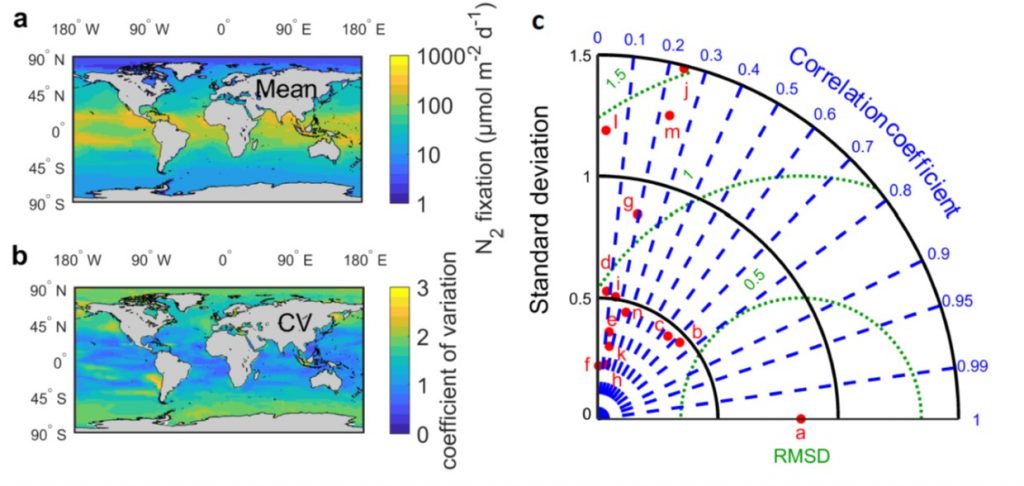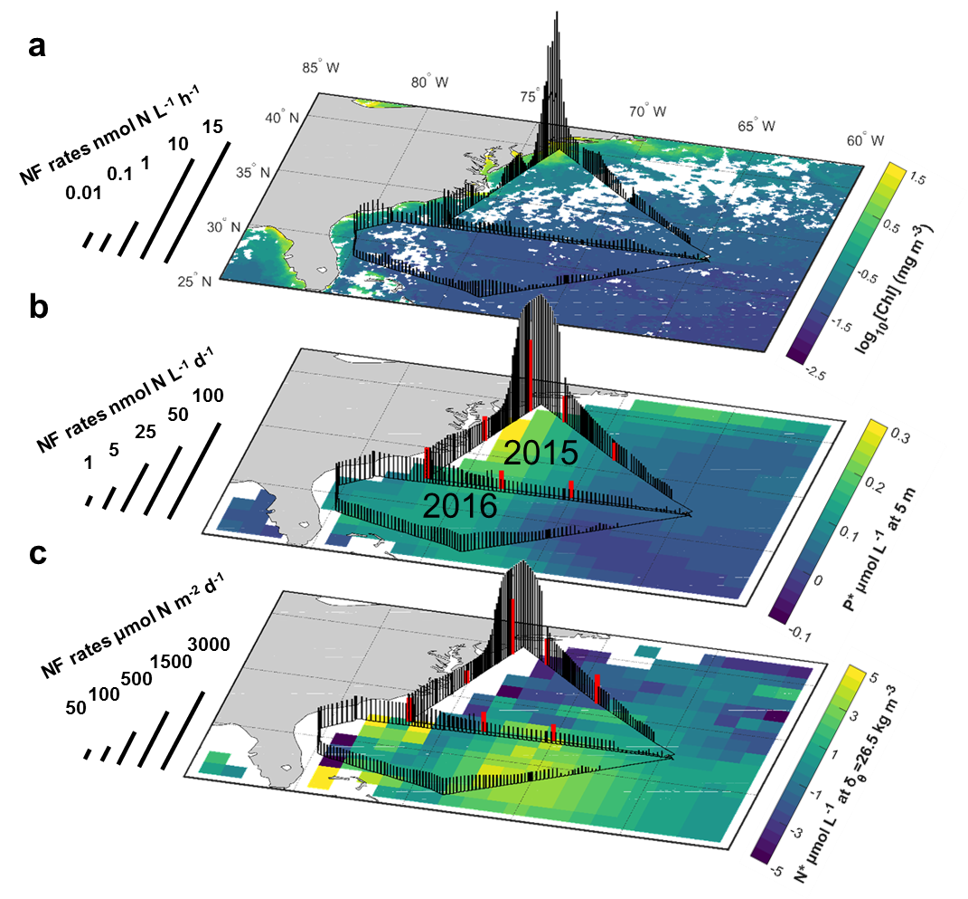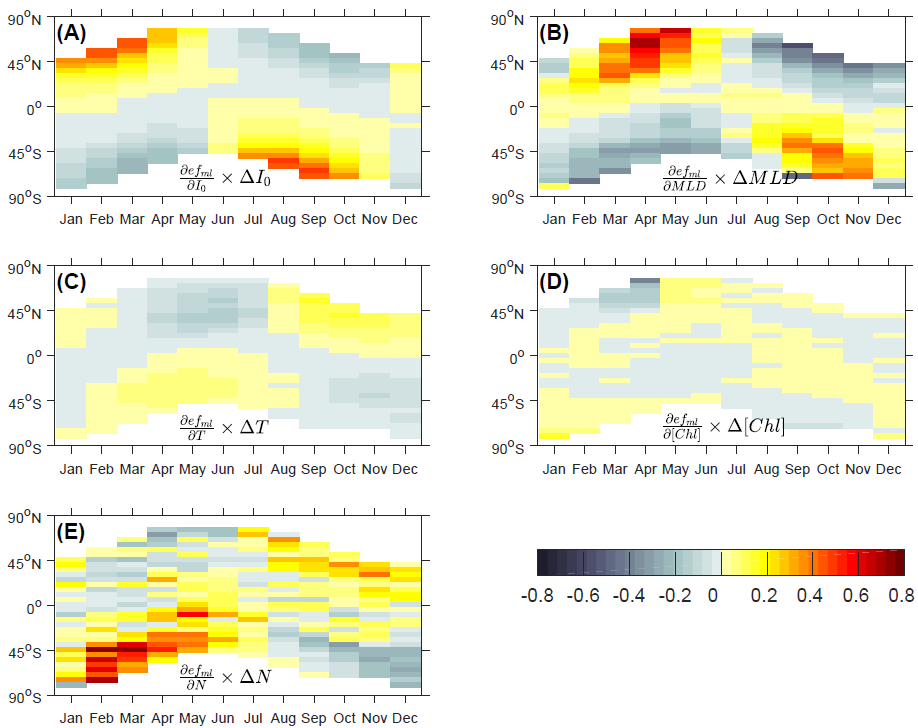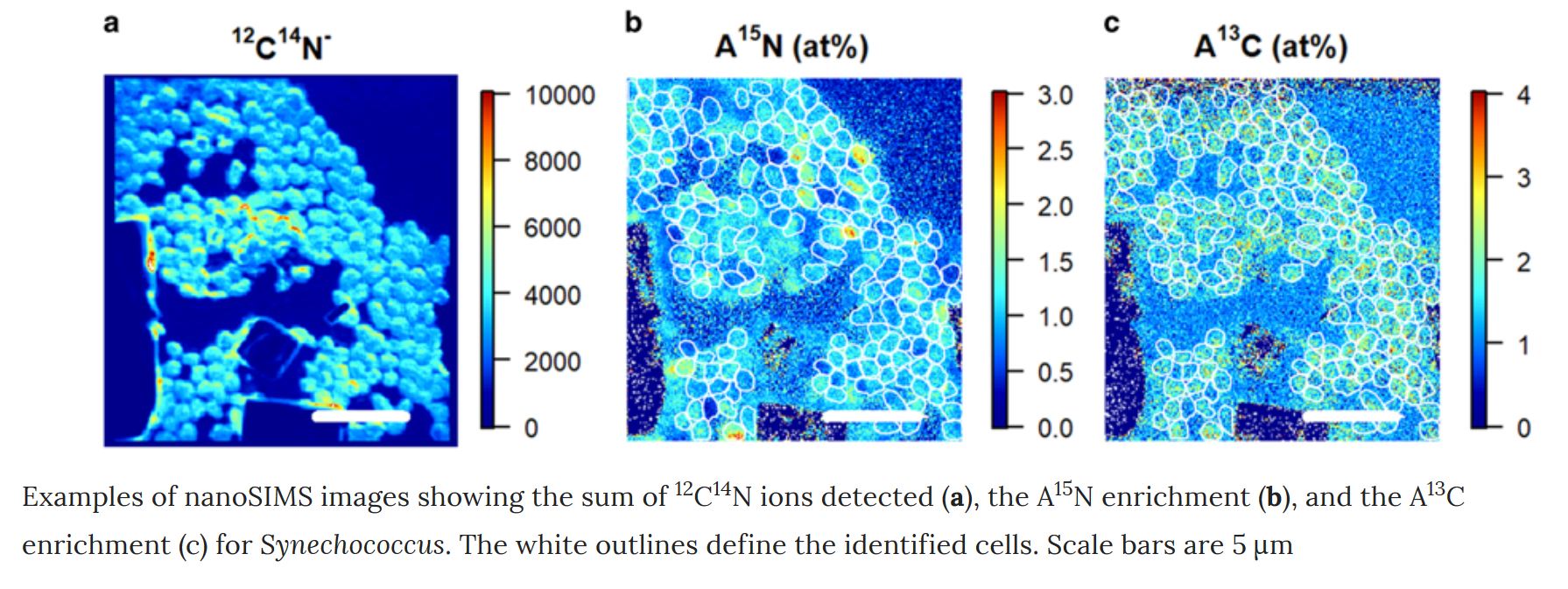The global distribution of marine euphotic-depth integrated Gross Primary Production (GPP) by machine-learning (Random Forest) upscaling of field observations of GPP derived from the triple isotopes of dissolved oxygen
Approximately half of global primary production occurs in the ocean. While the large-scale variability in net primary production (NPP) has been extensively studied, ocean gross primary production (GPP) has thus far received less attention. In this study, we derived two satellite-based GPP models by training machine-learning algorithms (Random Forest) withlight-dark bottle incubations (GPPLD) and the triple isotopes of dissolved oxygen (GPP17Δ).The two algorithms predict global GPPs of 9.2 ± 1.3 * 1015 and 15.1 ± 1.05 * 1015 mol O2 yr-1 for GPPLD and GPP17Δ, respectively. The projected GPP distributions agree with our understanding of the mechanisms regulating primary production. Global GPP17Δwas higher than GPPLD by an average factor of 1.6 which varied meridionally. The discrepancy between GPP17Δ and GPPLD simulations can be partly explained by the known biases of each methodology. After accounting for some of these biases, the GPP17Δ and GPPLD converge to 9.5~12.6 *1015 mol O2 yr-1, equivalent to 103~150 Pg C yr-1. Our results suggest that global oceanic GPP is 1.5-2.2 fold larger than oceanic NPP and comparable to GPP on land.
For more information, see publication.











You must be logged in to post a comment.